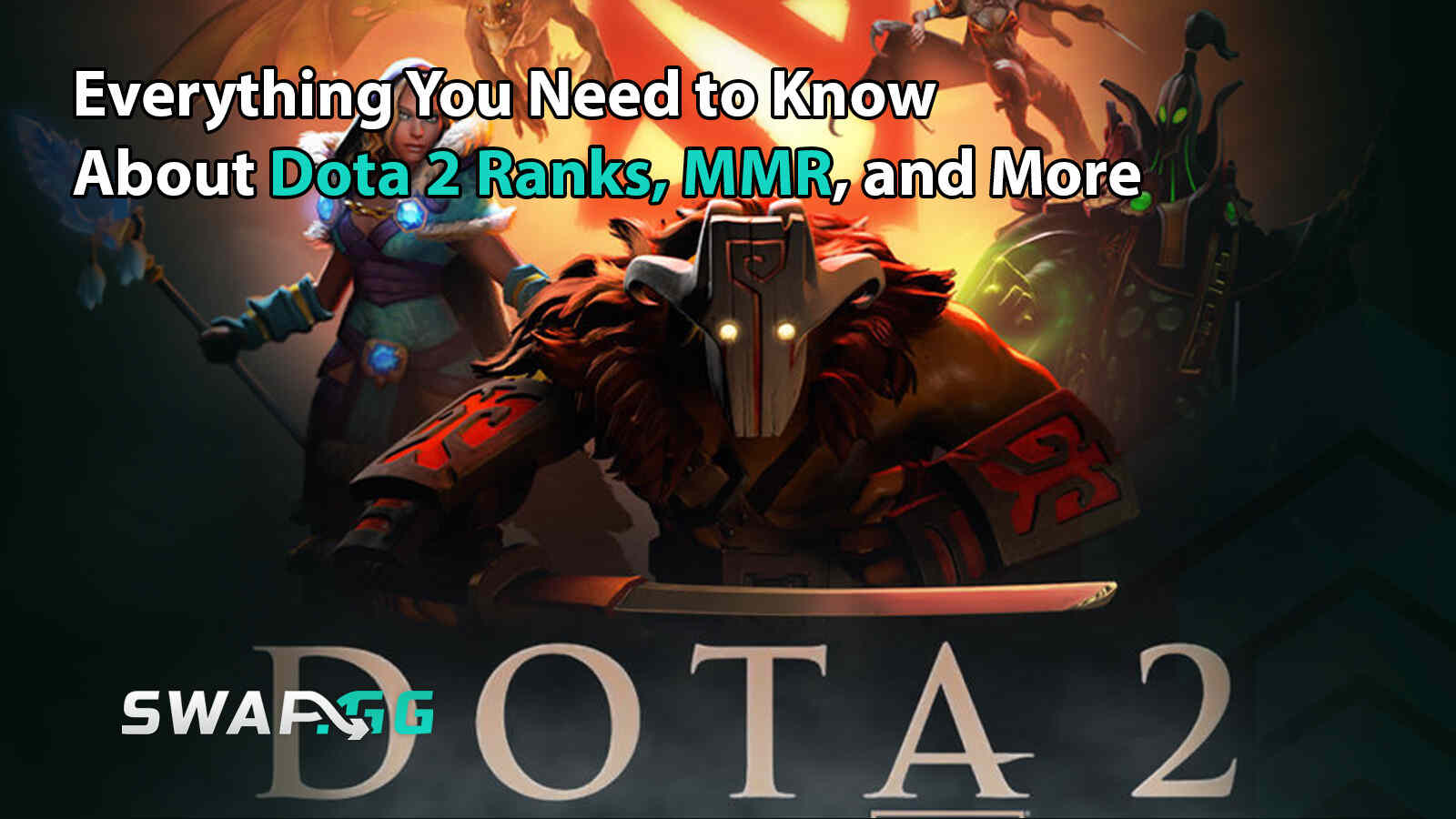Everything You Need to Know About Dota 2 Ranks, MMR and More

Posted on in Dota 2

The Dota 2 Match Making Rating (MMR) concept poses challenges in understanding for certain gamers. They find it difficult to handle all the numerical information combined with tier requirements. We understand! That's why we created a simple guideline that everybody can grasp, which describes Dota 2 ranking elements and MMR, along with calibration details and a new role-specific MMR system. In addition, this article will show a step-by-step instructions to check your Dota 2 MMR through all accessible ways.
MMR in Dota 2 - Explained
Matchmaking Rating (MMR) is a numerical score used in Dota 2 to rank players based on their skill level. It’s the backbone of the matchmaking system, ensuring fair competition by pairing players with opponents of similar abilities. Your MMR changes after every ranked match: a win increases your score, while a loss decreases it. Typically, solo matches adjust MMR by +30/-30 points, while party matches result in +20/-20 points per game.
MMR directly correlates with your in-game rank, which is displayed as a medal ranging from Herald to Immortal. Each medal is further divided into five sub-ranks (e.g., Herald I to Herald V), with Immortal being unique due to its leaderboard-based ranking system for top players
Calibration in Dota 2 - Explained
For new accounts or at the start of a new season, calibration determines your initial MMR. Players must meet two requirements before accessing ranked mode:
- Play 100 hours of unranked games.
- Complete 10 calibration matches.
During calibration, the game evaluates your performance primarily based on your win-loss record in these matches. While factors like kills, assists, and Gold Per Minute (GPM) may seem important, Valve has not confirmed that these metrics significantly influence calibration outcomes. A strong performance during calibration can place you in higher ranks, setting the stage for competitive play.
Dota 2 Ranks: From Herald to Immortal
Valve introduced major changes to the ranking standards for Dota 2 Season 5 that accurately display individual player abilities. Below, you’ll find all Dota 2 ranks, along with their medals, and MMR range.
Each rank is divided into five sub-levels (e.g., Guardian I to Guardian V), except Immortal, which features a leaderboard ranking system for top players in each region
How to Check Your Dota 2 MMR
You can check your MMR value for Dota 2 through built-in game features as well as external party applications. This guide offers detailed procedures for checking MMR using both approaches.
In-Game Method
- Launch Dota 2:
- Open the game and go to the main menu.
- Access Your Profile:
- Click on your profile icon, located at the top-left corner of the screen.
- Open the Stats Tab:
- Navigate to the Stats section within your profile.
- View Your MMR:
- Your MMR will be displayed in the top-right corner of the Stats window, alongside other performance metrics like win rates and hero statistics.
Third-Party Method
For more detailed tracking, such as viewing MMR changes after each match, you can use third-party scripts. Follow these steps:
- Enable Developer Console:
- Go to Settings in Dota 2.
- Under the Options tab, check the box for Enable Developer Console.
- Download a Script:
- Get a trusted script from platforms like GitHub (e.g., AveYo’s MMR tracker).
- Navigate to your Steam library, right-click on Dota 2, select Properties, and choose Browse Local Files under the Local Files tab.
- Place the script file in the appropriate directory (e.g., game/core/scripts/vscripts).
- Run the Script:
- Open Dota 2, launch the developer console (default key is ~), and input the required command provided by the script documentation.
- After each ranked match, your updated core and support MMR will appear as an overlay or in the console.
Role-Specific MMR
Dota 2's matchmaking system has seen a major update, swapping out the old Core/Support MMR split for a single rank with role-specific tweaks for the five key positions: Safelane Carry, Midlaner, Offlaner, Soft Support, and Hard Support. Here's what you need to know:
Key Highlights
Single Rank with Role Handicaps: Players now have just one visible rank. However, the game adjusts difficulty with separate handicaps for each role based on your skill level in that position. This makes matchmaking more balanced by matching you with similarly skilled players depending on the role you choose.
Role-Specific Queueing: Gone are the days of queuing broadly as Core or Support. Now, you need to queue for the specific role you wish to play. If you’re great at Midlane, the matchmaking system will pair you with others who excel in that role. If you're less experienced in another role, you'll be placed in games with a lower MMR to match your experience level.
Impact on MMR: Wins and losses still affect your overall MMR the same way, no matter which role you play. However, you'll see adjusted badge levels during matches to show your role-specific strength used for matchmaking.
Role Performance Tracking: Your initial role-specific adjustments are calculated using your historical Core/Support MMR and your performance over the last 100 games. You can check these adjustments in the Role Queue menu.
This new system is designed to make matchmaking fairer by considering skill differences across roles, while still giving you the freedom to try out different positions.
Final Thoughts: It’s a Journey, Not a Sprint
The article summarized Dota 2 ranks and MMR system including calibration and provided directions to check MMR in Dota 2. With this information in mind, you should begin working harder to improve your rank to the best of your ability. The highest ranks exist at an extremely competitive level, yet skilled players can still achieve them despite their difficulty.
Posted on in Dota 2
![[THUMBNAIL] Is 7.1 Surround Good for CS2? The Reality Behind Virtual Audio](https://swap.gg/cdn-cgi/image/f=auto/https://blog.swap.gg/content/images/2025/12/Is-7.1-Surround-Good-for-CS2_.png)
![[THUMBNAIL] Is CS2 CPU or GPU-intensive? What Hardware Actually Matters](https://swap.gg/cdn-cgi/image/f=auto/https://blog.swap.gg/content/images/2025/12/Is-CS2-CPU-or-GPU-intensive_.png)
![[THUMBNAIL] What Is the Cheapest Knife in CS2? Your Complete Budget Guide](https://swap.gg/cdn-cgi/image/f=auto/https://blog.swap.gg/content/images/2025/12/cheapest-knives.png)